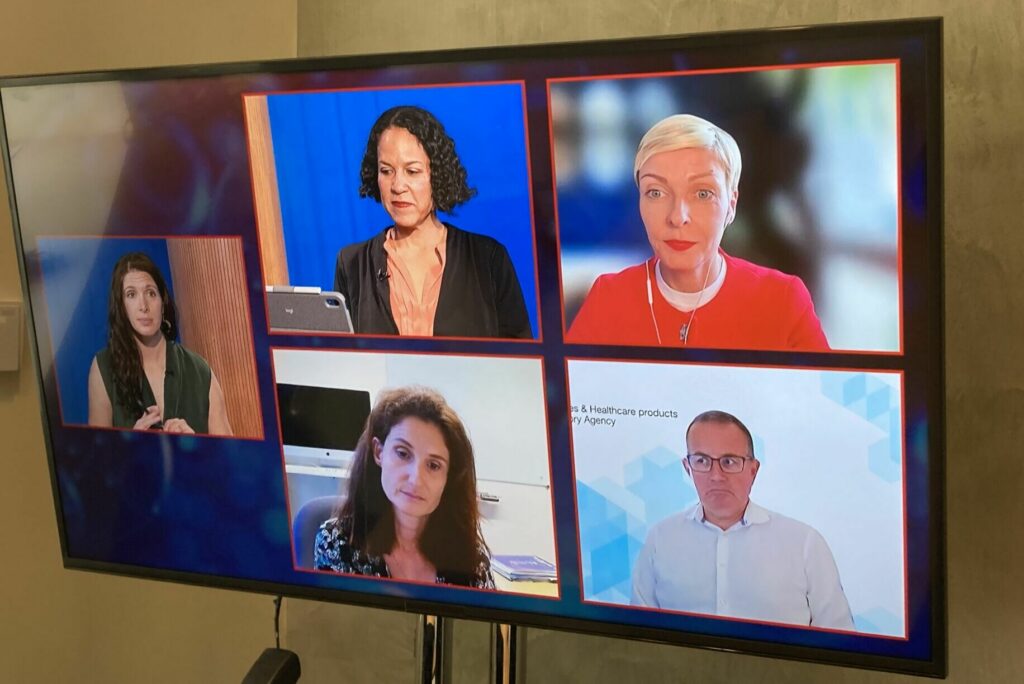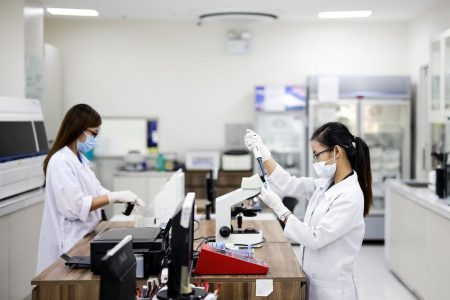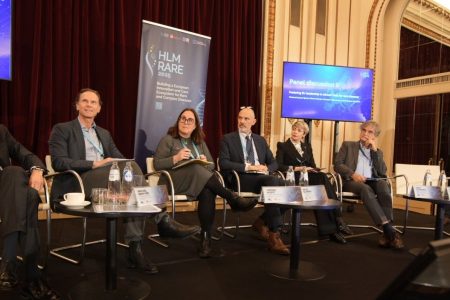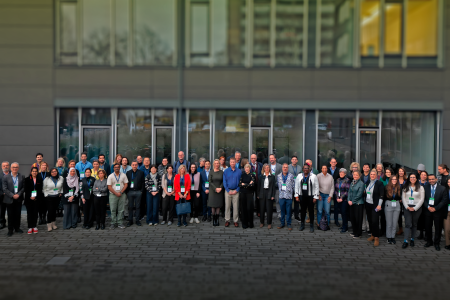On 25 June 2025, Daria Julkowska, Scientific Coordinator of ERDERA, participated as a panellist in a high-level webinar organised by Science Magazine and the Ipsen Foundation, titled: “Bridging silos: How scientists studying rare disease are building cross-disease communities to advance research and innovation”.
Julkowska joined three other experts from the US and United Kingdom, forming a panel that brought together diverse expertise in rare disease research, policy, and regulation. The panel included Kerry Jo Lee (U.S. Food & Drug Administration), Stephanie Cherqui (University of California), and Julian Beach (Medicines and Healthcare products Regulatory Agency, London), and it was moderated by Erika Gebel Berg (Science/AAAS).
Breaking silos: the ERDERA model
The discussion opened with reflections and examples of cross-disease collaboration. Julkowska highlighted ERDERA itself as a key success story, where collaboration in rare disease research was the main driver from its inception, with the partnership’s predecessor, EJPRD.
It has since evolved into a consortium that encompasses over 180 members, a growing list that includes funders, research institutions, hospitals, patient organisations, research infrastructures, and industry partners—all working under one umbrella to build the most efficient rare disease research ecosystem in Europe and beyond.
Advantages and challenges of global rare disease research communities
The panel examined what makes cross-border collaboration successful, as well as the challenges that can arise along the way. Today, as ERDERA spans across 37 countries, including Australia, Canada, and New Zealand, Julkowska noted that simply bringing consortia together can be enough to foster lasting collaboration. Many groups applying for ERDERA funding—whether ultimately selected or not—continue working together, demonstrating the compromise and drive of the research community.
However, the discussion also turned to real-world barriers and how sometimes external factors can significantly get in the way of research progress. Julkowska shared an example from a multinational-funded clinical trial, where the requirement to translate certain protocols into national languages led to delays and increased costs.
Building and sustaining collaborative communities
Another key theme of the webinar was how to create and maintain research communities that are aligned around a common goal. Julkowska summarised the core pillars as “mediation, mentoring, and training.”
Reflecting on ERDERA’s experience with public-private partnerships (PPPs), she explained the critical role of independent mediators in fostering trust and understanding between sectors. Without such support, she said, common misconceptions—such as the belief that academia lacks impact or that industry is solely profit-driven—can hinder productive collaboration.
This idea goes hand in hand with a mentoring taskforce, also a key component of ERDERA, particularly for translational projects that may require continued support. Experts in regulation, quality, statistics, and business collaborate with consortia to strengthen their project concepts and ensure follow-up towards concrete outputs.
Additionally, ERDERA boosts capacity development to foster mutual understanding, bringing together researchers and patients across all ERDERA-funded initiatives. They represent a key strategy for supporting meaningful and sustained cross-disease collaboration.
Leveraging data in rare disease research
The discussion also delved on how data-sharing platforms can accelerate rare disease research. Julkowska identified three critical elements for this: interoperability, common standards, and ontologies.
She described the Virtual Platform implemented by ERDERA, which connects a wide range of data resources—catalogues, genetic databases, biobanks, and registries. This structure ensures that each resource is interoperable and aligned with the FAIR principles (Findable, Accessible, Interoperable, and Reusable). Once onboarded, data can be reused in future research, facilitating cross-disease collaboration and ensuring valuable knowledge is not lost or siloed.
She went on to cite RD WikiPathways as a strong example of collaborative research, highlighting its “interdisciplinarity though which biologists, clinicians, and bioinformaticians help chart the Rare Disease Pathways together”. This helped accelerate the identification of the drug targets and understanding of the disease mechanisms, as well as the drug repositioning. “It really requires interdisciplinary collaboration but also — and this is very important — the standardisation and interoperability of different types of data”, she said.
ERDERA’s approach to incentivising interdisciplinary research
With 95% of rare diseases still lacking a treatment, Julkowska underlined the urgency of cross-disease collaboration, better integrating social sciences—particularly sociology, economics, and policy expertise—into rare disease research, shaping healthcare systems and influencing the policies that determine access and funding.
This is one of the drivers behind the mandatory requirement for interdisciplinary collaboration for all ERDERA funding opportunities.
Towards a future-ready research ecosystem
Looking ahead, stronger knowledge-sharing, robust community-building, enhanced public-private partnerships, and the early involvement of regulatory and health technology assessment (HTA) bodies should all become essential drivers for future progress.
Towards the end of the event, each panellist shared their vision of an ideal rare disease research ecosystem. “To me, it would be primarily focused on the needs of the patients, and it would encompass all the elements of the pipeline – from when the fundamental research kicks off to the very end of the cycle”. A cycle which, according to Julkowska, “does not finish when the therapy is being approved, but when it actually becomes available and accessible to patients”.
Faster access to treatments, in her view, will not happen unless innovation is well engrained throughout the research process, and stands on solid multistakeholder dialogue. “I believe we are in the right path”, she concluded, hoping that the goal becomes closer in the years to come.





